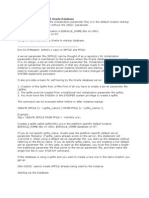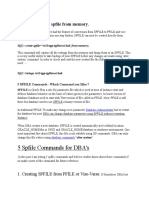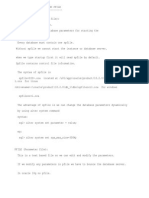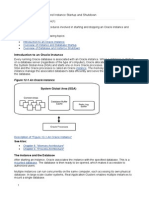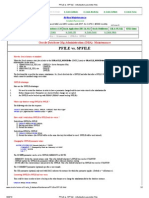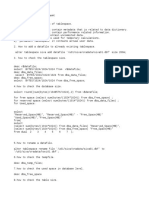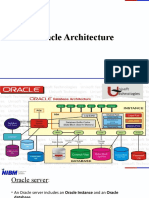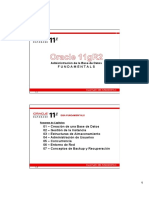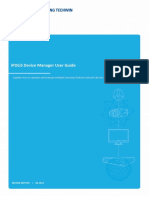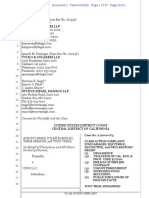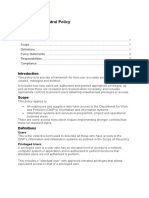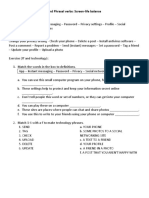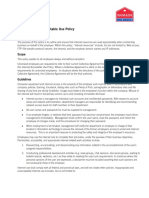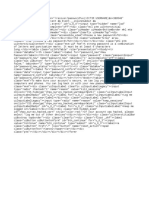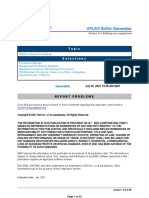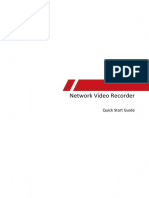0% found this document useful (0 votes)
10 views11 pagesChapter 7 Managing Oracle Database Single Instance
The document provides a comprehensive guide on managing Oracle Database Instances, covering startup and shutdown procedures, parameter files (SPFILE and PFILE), Automatic Diagnostic Repository (ADR), data dictionary, dynamic performance views, and password file management. It details various startup and shutdown modes, the differences between SPFILE and PFILE, and how to modify database parameters. Additionally, it explains the importance of ADR for diagnostics and the mechanisms for authenticating DBAs using password files.
Uploaded by
ParthCopyright
© © All Rights Reserved
We take content rights seriously. If you suspect this is your content, claim it here.
Available Formats
Download as DOCX, PDF, TXT or read online on Scribd
0% found this document useful (0 votes)
10 views11 pagesChapter 7 Managing Oracle Database Single Instance
The document provides a comprehensive guide on managing Oracle Database Instances, covering startup and shutdown procedures, parameter files (SPFILE and PFILE), Automatic Diagnostic Repository (ADR), data dictionary, dynamic performance views, and password file management. It details various startup and shutdown modes, the differences between SPFILE and PFILE, and how to modify database parameters. Additionally, it explains the importance of ADR for diagnostics and the mechanisms for authenticating DBAs using password files.
Uploaded by
ParthCopyright
© © All Rights Reserved
We take content rights seriously. If you suspect this is your content, claim it here.
Available Formats
Download as DOCX, PDF, TXT or read online on Scribd
/ 11





